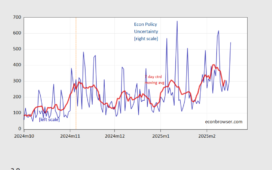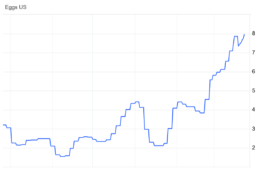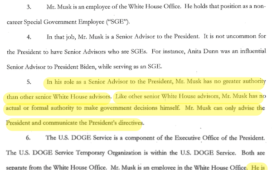Yves here. OilPrice overhyped a potential shortage in diesel, so take this forecast with a fistful of salt. But having said that, they point to a series of factors that look set to result in gas demand exceeding supply, with no short term fix. Of course, a big global economic slowdown could change that.
Higher gas price would generate more inflation. And this is the sort of inflation central banks can’t combat, save by killing economies stone cold dead. So higher fuel prices are likely to generate economic mismanagement.
By Irina Slav, a writer for Oilprice.com with over a decade of experience writing on the oil and gas industry. Originally published at OilPrice
- Global natural gas demand is rising faster than anticipated, with the International Energy Agency (IEA) warning of a potential supply shortage due to insufficient investment in production.
- Europe’s growing reliance on LNG, driven by the decline in Russian gas supplies, could lead to more volatile international gas markets.
- Slow expansion in LNG supply is caused by rising construction costs, regulatory challenges, and environmental policies.
Natural gas demand is set to increase more than previously expected, the International Energy Agency reportedrecently. Demand will remain strong next year as well, the agency predicted, warning that this might lead to a problematic situation with supply—because that’s not growing fast enough.
Just a year ago, the International Energy Agency predicted that oil and gas demand would peak before 2030. That prediction had the IEA saying there was no need for further investments in the production of either hydrocarbon. Now, it appears there is nowhere near enough investment in new natural gas production, for one. So, a shortage is on the way.
Just a few years ago, there was a substantial glut on the LNG market. Everyone was in a rush to build LNG plants, and supply increased faster than demand. In those past few years, however, a lot of countries developed a taste for the liquefied fuel as a cleaner alternative to coal—and not too expensive, either. Of course, prices have changed from the glut times, notably in 2022, when a lot of Asian LNG buyers were priced out of the market by rich Europe, which suddenly found itself cut out of most Russian pipeline supply.
Since then, Europe has cemented its place as a major LNG importer, currently preparing for the end of the last remaining Russian pipeline gas flow after Ukraine said it would not renew a transit agreement with Gazprom. This means Europe will need more LNG—but there is not enough new supply coming. What this means is another price shock, and poorer nations trying to reduce their dependence on coal are getting priced out once again.
Why is new supply so slow in coming, one might reasonably wonder at this point, given the rosy outlook for gas demand. The IEA is only the latest in a string of forecasters expecting growing demand for the commodity—thanks to the shift away from coal, thanks to growing populations, and, of course, thanks to artificial intelligence.
There seem to be several reasons for the slow expansion in supply. One is purely physical, per a recent Bloomberg report that looked at the imbalances in the natural gas market. LNG production plants take a while to build—and they face rising construction costs and a growing regulatory burden in the world’s biggest producer and exporter of the fuel: the United States. To add insult to injury, one LNG project just saw its permit revoked by a court on climate change-related grounds.
There is also the so-called pause on new LNG capacity, which may not be relevant to immediate demand but will become relevant in the medium term as the demand growth for natural gas continues to increase, driven by Big Tech and its artificial intelligence rush. That was adopted by the Biden administration earlier this year, based on a single study claiming that natural gas was worse for the atmosphere than coal. While some have criticized the study for multiple flaws, it was enough for the U.S. federal government—tightening future gas supply markets.
The European Union, despite its strong appetite for LNG, has not been helping itself. The bloc recently passed a new piece of legislation called the Methane Regulation that seeks to ensure that only low-emission LNG enters the EU. This, of course, would make it even more expensive for suppliers to build their production facilities, adding to the final cost of the fuel. As a silver lining, the regulation would probably free up non-certified LNG supply for less wealthy buyers, reducing the demand pressure on suppliers.
“The growth we’re seeing in global gas demand this year and next reflects the gradual recovery from a global energy crisis that hit markets hard,” the IEA’s energy markets director Keisuke Sadamori said in the news release on demand and supply trends. “But the balance between demand and supply trends is fragile, with clear risks of future volatility,” Sadamori also said.
This is an interesting observation, given the IEA’s firm belief that demand for hydrocarbons is being squeezed out by alternative energy sources such as wind and solar. It was that belief that prompted the agency to repeatedly forecast peak demand for oil in about four years and peak demand for gas two years later. Now, it appears that gas demand is still very much tied to economic growth or its absence—with all due implications
Europe is struggling to register any growth whatsoever, and access to affordable gas is key for the successful outcome of this struggle. Various international organizations concerned about the Earth’s climate want Asian nations with growing energy needs to use more gas than coal. For that, gas needs to be cheap, which it is not going to be anytime soon. Yet another stumbling block on the obstacle course of the transition.













